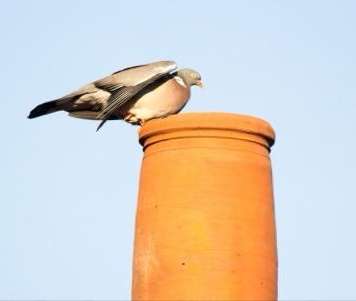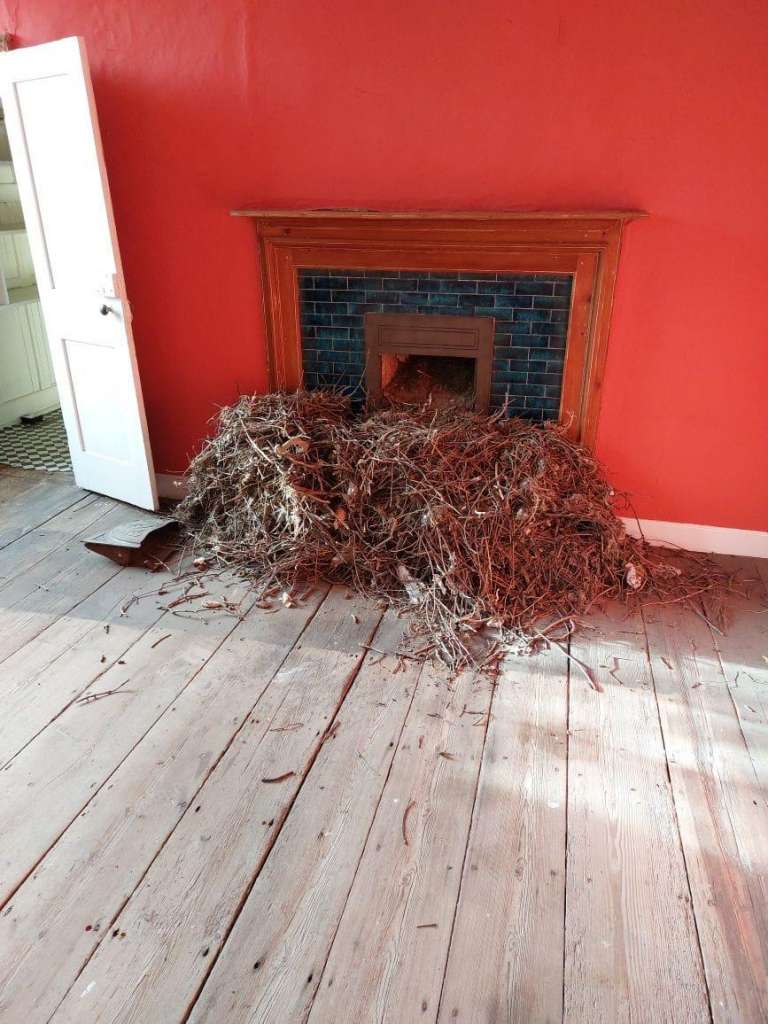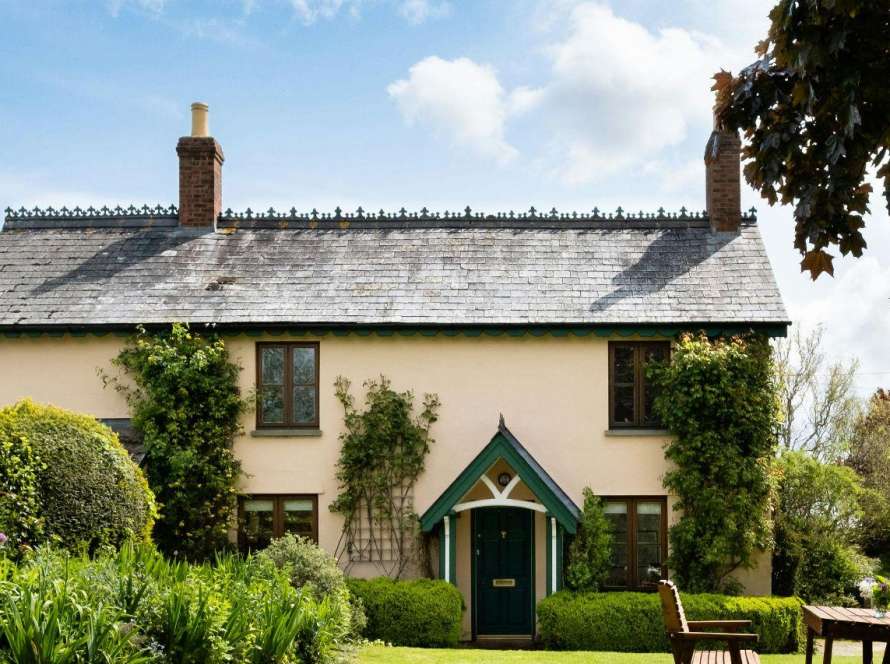As we move into late August, many homeowners across Cambridgeshire are already thinking about preparing their homes for autumn. While you might be focused on garden maintenance or checking heating systems, there’s one crucial task that often gets overlooked – dealing with bird nests in chimneys.
If you’ve heard scratching, chirping, or rustling sounds from your chimney over the past few months, now is finally the time to take action. The legal nesting season has ended, which means September presents the perfect opportunity to safely remove any nesting materials and ensure your chimney is ready for the heating season ahead.
Understanding why this timing matters – and what’s involved in the process – could save you from serious problems when you first light your fire this autumn.
Why September Matters: The End of Nesting Season
Between March and August, UK law strictly protects nesting birds, making it illegal to disturb active nests or remove nesting materials. This protection applies to all wild birds under the Wildlife and Countryside Act 1981, with hefty fines for violations.
For homeowners who discovered unwelcome tenants in their chimneys during spring or early summer, this legal protection meant months of waiting. Many residents across Cambridge, Ely, and surrounding areas have contacted us throughout the summer, concerned about birds in their chimneys but unable to take immediate action.
September changes everything:
- Nesting season officially ends
- Young birds have fledged and left nests
- Legal removal of nesting materials becomes possible
- Chimney cleaning and maintenance can resume safely
The timing isn’t just about legal compliance – it’s practically essential. Attempting to use your fireplace or wood burner with nesting materials still present creates serious safety risks that we’ll explore in detail.
The Bird Species Behind Your Chimney Problems
Different bird species create different types of problems in chimneys, and understanding what you’re dealing with helps explain why professional removal is so important.
Jackdaws are by far the most common culprits in Cambridgeshire. These intelligent members of the crow family are particularly fond of chimney pots and can move astonishing quantities of sticks and debris. We regularly remove jackdaw nests from properties in Newmarket, Royston, and Saffron Walden that contain several wheelbarrow loads of material.

Starlings often nest in groups and prefer the shelter of chimney cowls or damaged pointing. Their nests tend to be more compact but can still create significant blockages, particularly problematic in the Victorian terraces common throughout Cambridge city centre.
Swifts sometimes use chimneys as nesting sites, though their populations have declined significantly. These birds create relatively small nests but their presence indicates your chimney offers easy access that other wildlife will also exploit.
Pigeons occasionally nest in wider flue openings, creating messy situations with substantial droppings that require thorough cleaning.
Each species brings its own challenges, but all create the same fundamental problem: a blocked flue that prevents safe operation of your heating appliance.
The Hidden Dangers of Nesting Materials
Many homeowners assume that bird nests are just a minor inconvenience, but the reality is far more serious. Nesting materials create multiple safety hazards that can put your family at risk.
Fire Hazards Dried twigs, grass, and other organic materials are highly combustible. When you light your first fire of the season, these materials can ignite, creating an uncontrolled blaze within your chimney. Unlike normal chimney fires, which are already dangerous, fires involving nesting materials burn unpredictably and can spread rapidly.
Carbon Monoxide Risks Blocked flues prevent proper ventilation of combustion gases. When your fireplace, wood burner, or boiler can’t vent properly, deadly carbon monoxide can accumulate in your living space. This invisible, odourless gas kills without warning – making blocked chimneys a genuine threat to life.
Structural Damage Large nests can create substantial blockages that cause pressure problems and poor combustion. This can lead to excessive heat buildup, cracking of flue linings, and damage to your chimney structure that’s expensive to repair.
Health Concerns Bird droppings and nesting materials can harbour parasites, bacteria, and fungi. Disturbed nesting materials can become airborne, creating respiratory hazards for family members, particularly those with asthma or allergies.
Properties throughout St Ives, Huntingdon, and St Neots often feature older chimney systems that are particularly vulnerable to these problems. The combination of traditional construction and wildlife pressure means that nest-related issues can quickly escalate if not addressed promptly.
What Professional Nest Removal Involves
Professional bird nest removal is far more complex than simply pulling out visible materials. Our Guild of Master Chimney Sweeps certified approach ensures complete removal while protecting your chimney and maintaining safety standards.
Initial Assessment We begin with a thorough inspection to determine the extent of nesting activity. This includes checking for multiple nests, assessing structural damage, and identifying entry points that allowed access.

Complete Material Removal Using specialist equipment, we remove all nesting materials from the entire flue system. Birds often drop materials deep into chimneys, creating blockages that aren’t visible from above. Our industrial vacuum systems and flexible rods ensure complete clearance.
Thorough Chimney Sweeping Nest removal is always combined with comprehensive chimney sweeping – you can’t have one without the other. The sweeping process removes all residual debris, clears any soot or deposits disturbed during nest removal, and ensures complete preparation for safe use.
Structural Assessment We inspect for any damage caused by nesting activity. Birds can dislodge pointing, damage cowls, or create openings that allow water ingress.
Prevention Planning Finally, we identify and recommend solutions to prevent future nesting. This might involve fitting appropriate guards, repairing entry points, or installing deterrent systems.
The process duration varies significantly depending on the size and extent of nesting materials – from small nests that can be cleared relatively quickly to extensive accumulations that may take several hours to remove completely.
Why Combined Nest Removal and Sweeping is Essential
Nest removal and chimney sweeping are inseparable services – we never offer one without the other. When nesting materials are present in your chimney, the removal process inevitably disturbs soot, debris, and deposits throughout the flue system.
Why they must be combined:
- Nest removal disturbs the entire flue system
- Sweeping removes all loosened debris and deposits
- Complete inspection ensures nothing is missed
- Proper preparation for safe seasonal use
Many properties in Bishop’s Stortford and surrounding villages benefit from this combined approach, addressing both immediate nest issues and preparing for winter heating needs in a single visit.
HETAS guidelines recommend:
- Complete sweeping after any major blockage removal
- Inspection for damage caused by blocked ventilation
- Testing of draw and ventilation effectiveness
- Documentation of chimney condition for insurance purposes
Don’t Delay: Book Your September Appointment Now
September is the optimal month for addressing bird nest issues, but availability fills quickly as homeowners across Cambridgeshire prepare for the heating season. The earlier you book, the more choice you’ll have for appointment times that suit your schedule.
Why book now:
- September is the first legal opportunity after nesting season
- Early booking ensures availability before peak demand
- Preparation completed well before first fires of autumn
- Peace of mind knowing your chimney is safe and ready
Contact us as soon as possible to secure your appointment. Properties that have experienced nesting issues should be prioritised to ensure your chimney is properly prepared before you need to use your heating.
Booking considerations:
- Bird guards or cowls may need installation
- Early booking provides better time slot availability
- Preparation for heating season before first cold weather
Popular booking times fill quickly, particularly as homeowners across Cambridgeshire prepare for winter. Properties that have experienced nesting issues should prioritise early booking to ensure availability.
Prevention: Stopping Future Problems
Once your chimney is clear and swept, prevention becomes the priority. September is also the ideal time to install deterrent measures that will protect your chimney through the next nesting season.
Effective prevention methods:

- Bird guards: Wire mesh covers that prevent access while maintaining ventilation
- Cowl fitting: Specialist terminals that deter nesting while improving draw
- Pointing repairs: Sealing entry points that allow access to flue systems
- Regular maintenance: Annual sweeping that identifies problems early
What doesn’t work:
- Temporary blocking during nesting season (still illegal if birds are present)
- DIY deterrents that can trap birds or create new hazards
- Leaving the problem unaddressed year after year
Prevention is always more cost-effective than dealing with established nesting problems. A properly protected chimney saves money, prevents damage, and eliminates the annual stress of dealing with unwelcome tenants.
The Insurance Factor
Many homeowners don’t realise that bird nest damage can affect insurance claims. Most policies require evidence of regular maintenance and prompt action to address known problems.
Insurance implications:
- Regular maintenance records support any future claims
- Professional removal provides documentation for insurance purposes
- Prevention measures demonstrate responsible property management
- Prompt action helps maintain coverage validity
September action protects both your property and your insurance position, ensuring you’re covered if problems develop during the heating season.
FAQs
Is it definitely legal to remove bird nests in September?
Yes, the nesting season protection period ends in August, making September safe for nest removal. However, always check that nests are genuinely inactive before removal to ensure full legal compliance.
How do I know if birds are still using the nest?
Listen for sounds from the chimney during dawn and dusk when birds are most active. If you hear continued chirping, rustling, or see birds entering/leaving, wait a few more weeks before removal.
Can I remove a bird nest myself?
While legal in September, DIY removal is not recommended. Nests often extend deep into flues, require specialist equipment for safe removal, and disturbing them can scatter debris throughout your home.
Will cleaning remove all traces of nesting activity?
Professional cleaning removes all visible materials, but some staining or minor residual odours may persist temporarily. These typically fade with resumed chimney use.
Do bird guards actually prevent nesting problems?
Yes, properly fitted bird guards are highly effective at preventing access while maintaining proper chimney ventilation. They’re the most reliable long-term solution for preventing recurring nesting issues.
What happens if I use my fireplace with nests still present?
This creates serious fire and carbon monoxide risks. Nesting materials can ignite, block ventilation, or cause dangerous gas accumulation. Never use heating appliances until nests are professionally removed.
Why Choose Ablewight Chimney Services?
Certified Expertise As members of the Guild of Master Chimney Sweeps and HETAS registered professionals, we bring decades of combined experience to every job. Our Trading Standards approval gives you additional confidence in our work quality and business practices.
Comprehensive Service Beyond chimney sweeping, we offer CCTV chimney surveys, bird nest removal, stove servicing, and specialist treatments like Cre-away for heavy tar and creosote deposits. One call handles all your chimney needs.
Local Knowledge Based in Cambridge and covering the 25-mile radius including Ely, Newmarket, Royston, Saffron Walden, St Ives, Huntingdon, St Neots, and Bishop’s Stortford, we understand local housing types and common chimney issues in our area.
Transparent Pricing No hidden costs or surprise charges. We provide clear, upfront pricing and explain any additional work needed before proceeding.
Contact Your Local Chimney Experts
September won’t last forever, and neither will appointment availability. If you’ve been waiting to address bird nesting issues in your chimney, now is the time to act.
Get in touch today:
- Phone: 01223 627012
- Email: hello@ablewight.co.uk
Service Areas: Cambridge • Ely • Newmarket • Royston • Saffron Walden • St Ives • Huntingdon • St Neots • Bishop’s Stortford • All surrounding villages within 25 miles
Certifications: Guild of Master Chimney Sweeps • HETAS Registered • Trading Standards Approved
Don’t let another heating season begin with blocked chimneys and safety risks. Contact Ablewight Chimney Services today to book your September nest removal and chimney sweeping service.


